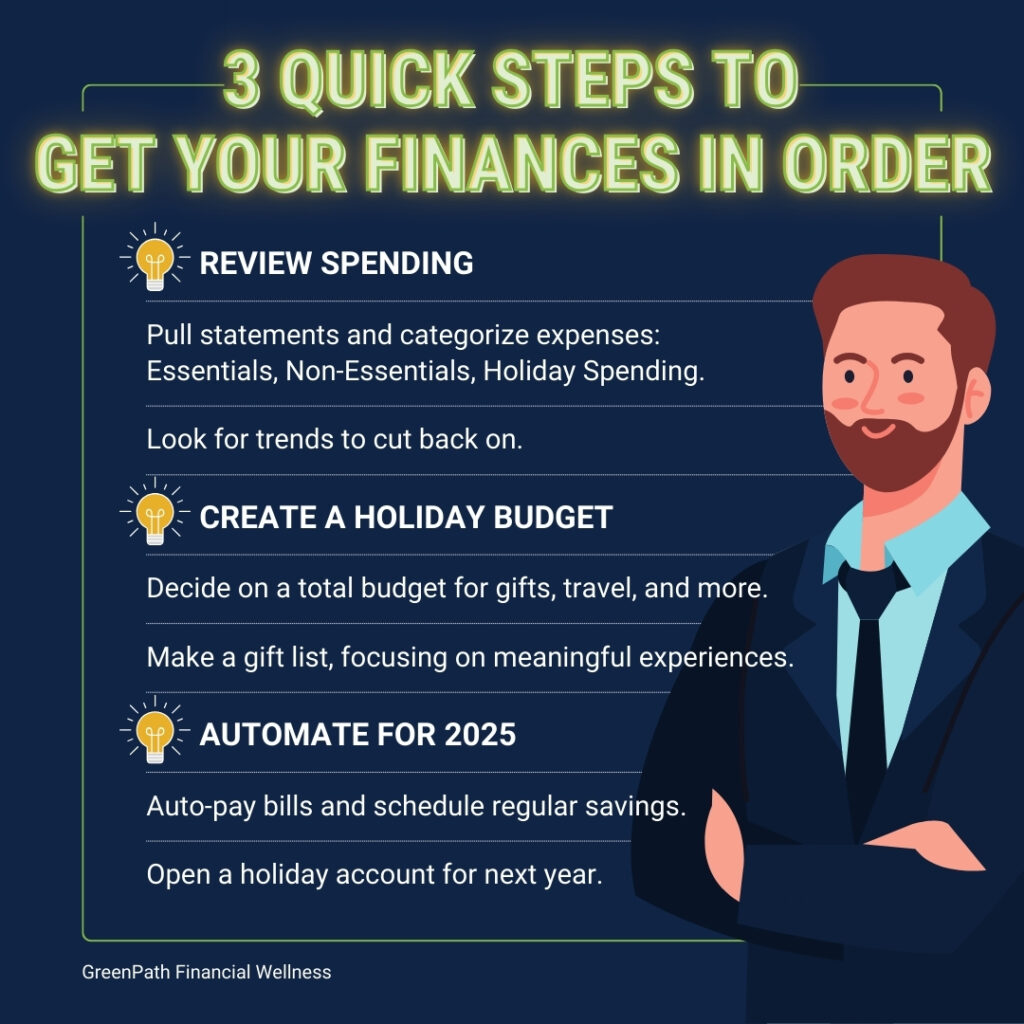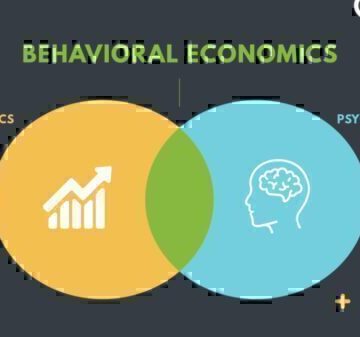Take a look at your recent spending to spot where you might save a little extra for the holidays.
Set a holiday budget now to avoid impulse buys and stick to what matters most.
For more tips and personalized support, GreenPath provides free resourcesfree resources to help keep your finances on track all season long.
With the holiday season fast approaching and Black Friday deals flashing everywhere, I’m here for a quick time out to help you make a plan that works for your goals. This is especially important because the 2024 Deloitte holiday retail survey found that shoppers plan to spend 8% more than last year.
I know you have a lot going on and (not but), now is the perfect time to pause, reassess, and get your finances in order before the holiday rush. Set yourself up for a stress-free season and a strong start to the new year with these three simple steps. Let’s take control of your financial wellness this week.
1. Review Your Monthly Spending: Get a Clear Picture of Where Your Money Goes
The first step to getting your finances in order is understanding where your money is going – not where you think (or wish) it’s going. Even if you follow a budget, take this week to review your actual spending from the past 1-2 months. Reminder: This isn’t about judging yourself, in this exercise, you’re after facts and clarity.
Here’s how to do it:
- Gather your statements: Pull up your bank and credit card statements from the past 30 days, and don’t forget to check your mobile payment apps like CashApp and Venmo.
- Categorize your expenses: Break down your spending into three categories: essentials (housing, groceries), non-essentials (entertainment, dining out), and holiday expenses (gifts, travel).
- Look for patterns: Are there any surprises? Are you spending more than expected in one of the categories? Spotting trends can help you adjust.
When you know where your money has gone, you’re better equipped to decide where it should go for the rest of the year. This review also gives you a clearer picture of how much disposable income you have, making it easier to set limits for holiday spending.
Pro Tip: Decide 2-3 things you can cut back or pause spending for the next few weeks. These savings can go toward your emergency fund or holiday expenses.
2. Build a Holiday Spending Plan: Set Limits Before the Sales Start
Before Black Friday and Cyber Monday sales tempt you, create a holiday spending plan. Without a plan, you will fall into the trap of impulse buying. The good news? Holiday shopping provides a great opportunity to get creative with your gifts without derailing your financial goals
Here’s how to do it:
- Set a total holiday budget: Based on your spending review, decide how much you can realistically spend on gifts, travel, and entertainment. Then plan celebrations at free venues, make people come to you (with a dish to pass) and feel the magic with a lower price tag.
- Make a gift list: Write down who gets a gift and set a budget. Remember to allocate part of your budget to experiences rather than physical gifts—making memories can often be more meaningful.
- Shop smart: Take advantage of sales, compare prices, use discount codes, and consider browser extensions like Honey or Rakuten for extra savings. Abandoning your online cart for 24-72 hours may even earn you a discount. Remember that buying nothing means you keep 100% of your money.
A clear holiday spending plan helps you stay within your means and enjoy the season without the dread of a large credit card bill in January. Knowing your limits ahead of time may help you confidently say no to last-minute purchases or invitations from people you don’t like that much anyway.
Pro Tip: Reduce temptation from marketing emails by using a separate “shopping” email address for loyalty programs and online orders. Try something like firstname.rewards@favoriteemailservice.com. This way, you won’t be bombarded with deals. When you’re ready to shop, check your shopping inbox for discounts.
3. Start Preparing for 2025 Now with Automated Savings and Payments
While it’s easy to focus on the holidays, I have to remind you that the new year is just around the corner. By automating your savings and payments this week, you’ll set yourself up for a strong financial start in 2025.
Here’s how to do it:
- Automate bill payments: Set up auto-pay for recurring bills like rent, utilities, and debt payments to avoid late fees and protect your credit score during the busy season.
- Schedule savings contributions: Small amounts add up over time. Whether for a high-yield savings account, retirement fund, or emergency fund, automate regular transfers from your checking account or use direct deposit through your employer.
- Consider a holiday savings account: If holiday spending usually throws off your budget, open a dedicated savings account in January. Automating contributions into this account will give you a cushion for next year’s holiday expenses.
Automating your finances takes much of the effort out of money management. It also creates a system for ensuring that your savings and bills are prioritized no matter how busy you get.
Pro Tip: If you receive a year-end bonus or tax refund, set up automatic transfers to split it between savings, debt payoff, and a small treat for yourself.
Final Thoughts
Getting your finances in order doesn’t have to be overwhelming. Taking these steps will help you feel more confident heading into the holiday season and a new year. Remember, the joy of the season doesn’t come from how much you spend but from appreciating the good around you and spending time with loved ones.
GreenPath Financial Wellness offers trusted resourcestrusted resources to help people navigate their finances, especially during the holidays. Look around this website for tools to keep your finances on track.

GreenPath Financial Service
GreenPath, A Financial Resource
If you’re interested in building healthy financial habits, paying down debt, or saving for what matters most, take a look at these free financial tools.










